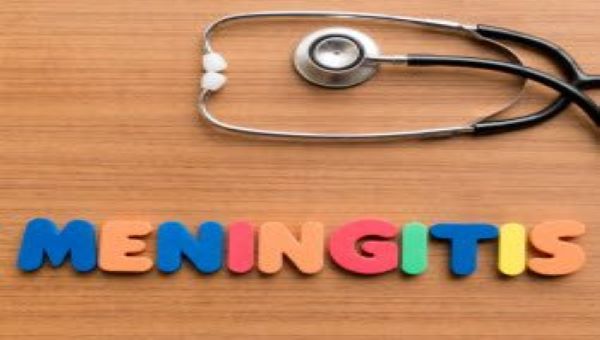Know more about MENINGITIS
Jul 02, 2022
MENINGITIS
INTRODUCTION
- Meningitis is an inflammation of the fluid and membranes (meninges) surrounding your brain and spinal cord.
CAUSES
- Several different bacteria can cause meningitis. Streptococcus pneumoniae, Haemophilus influenzae, Neisseria meningitidis are the most frequent ones.
- N. meningitidis, causing meningococcal meningitis, is the one with the potential to produce large epidemics.
- There are 12 serogroups of N. meningitidis that have been identified, 6 of which (A, B, C, W, X and Y) can cause epidemics.
Risk factors
- Skipping vaccinations.
- Age. Most cases of viral meningitis occur in children younger than age 5. Bacterial meningitis is common in those under age 20.
- Living in a community setting. College students living in dormitories, personnel on military bases, and children in boarding schools and child care facilities are at greater risk of meningococcal meningitis. This is probably because the bacterium is spread through the respiratory route, and spreads quickly through large groups.
- Pregnancy. Pregnancy increases the risk of listeriosis — an infection caused by listeria bacteria, which may also cause meningitis.
- Compromised immune system. AIDS, alcoholism, diabetes, use of immunosuppressant drugs and other factors that affect your immune system also make you more susceptible to meningitis.
SIGNS & SYMPTOMS
- The most common symptoms of meningitis are a stiff neck, high fever, sensitivity to light, confusion, headaches and vomiting.
- Even with early diagnosis and adequate treatment, 5% to 10% of patients die, typically within 24 to 48 hours after the onset of symptoms.
- Bacterial meningitis may result in brain damage, hearing loss or a learning disability in 10% to 20% of survivors.
- A less common, but even more severe (and often fatal), form of meningococcal disease is meningococcal septicaemia, which is characterized by a haemorrhagic rash and rapid circulatory collapse.
DIAGNOSIS
- Initial diagnosis of meningococcal meningitis can be made by clinical examination followed by a lumbar puncture showing a purulent spinal fluid.
- The bacteria can sometimes be seen in microscopic examinations of the spinal fluid.
- The diagnosis is confirmed by growing the bacteria from specimens of spinal fluid or blood, or by polymerase chain reaction (PCR).
- Diagnosis can also be supported by rapid diagnostic tests such as agglutination tests, although currently available tests have several limitations.
- The identification of the meningococcal serogroups and testing for susceptibility to antibiotics are important to define control measures.
- Laboratory methods for the diagnosis of meningitis caused by Neisseria meningitidis, Streptococcus pneumoniae, and Haemophilus influenzae
- Laboratory materials for the diagnosis of bacterial meningitis by polymerase chain reaction (PCR).
PREVENTION
- Common bacteria or viruses that can cause meningitis can spread through coughing, sneezing, kissing, or sharing eating utensils, a toothbrush or a cigarette.
These steps can help prevent meningitis:
- Wash your hands.
- Practice good hygiene.
- Stay healthy.
- Cover your mouth.
- If you're pregnant, take care with food.
·Vaccinations
Some forms of bacterial meningitis are preventable with the following vaccinations:
- Haemophilus influenzae type b (Hib) vaccine.
- Pneumococcal conjugate vaccine (PCV13).
- Pneumococcal polysaccharide vaccine (PPSV23).
- Meningococcal conjugate vaccine.
TREATMENT
The treatment depends on the type of meningitis you or your child has.
Bacterial meningitis
- Acute bacterial meningitis must be treated immediately with intravenous antibiotics and sometimes corticosteroids. This helps to ensure recovery and reduce the risk of complications, such as brain swelling and seizures.
- The antibiotic or combination of antibiotics depends on the type of bacteria causing the infection. Your doctor may recommend a broad-spectrum antibiotic until he or she can determine the exact cause of the meningitis.
- Your doctor may drain any infected sinuses or mastoids — the bones behind the outer ear that connect to the middle ear.
Viral meningitis
- Antibiotics can't cure viral meningitis, and most cases improve on their own in several weeks. Treatment of mild cases of viral meningitis usually includes:
- Bed rest
- Plenty of fluids
- Over-the-counter pain medications to help reduce fever and relieve body aches
- Your doctor may prescribe corticosteroids to reduce swelling in the brain, and an anticonvulsant medication to control seizures. If a herpes virus caused your meningitis, an antiviral medication is available.
Other types of meningitis
If the cause of your meningitis is unknown, your doctor may start antiviral and antibiotic treatment while the cause is determined.












